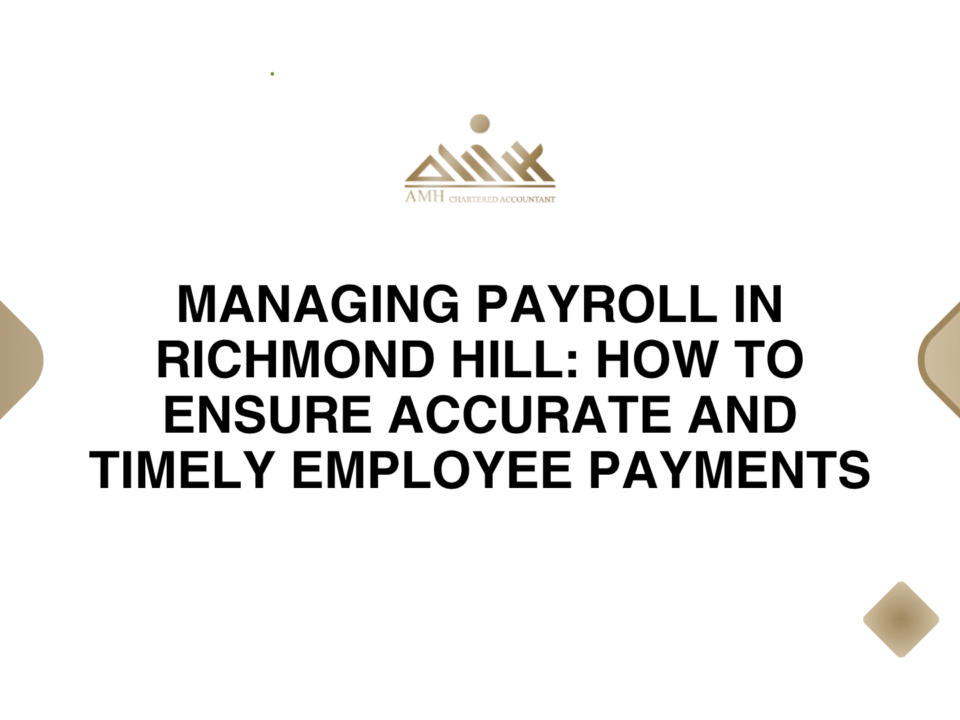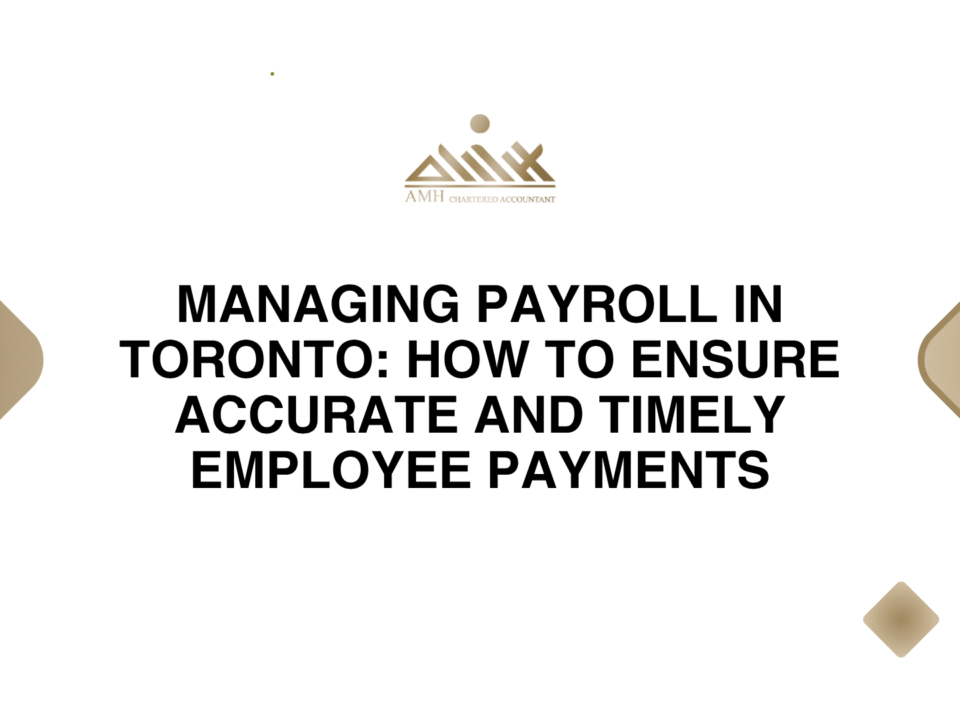
The Role of Internal Audit Independence in Building Stakeholder Trust
September 10, 2025
Financial Implications of Transitioning from Sole Proprietor to Corporation
September 20, 2025Flat-Fee vs. Hourly Pricing for Accounting Services: Pros and Cons
Choosing the right pricing model for accounting services can significantly impact your business’s budgeting, cash flow, and overall satisfaction with your accounting firm. When working with an accounting firm like AMH Chartered Professional Accountant in Toronto, Milton, Oakville, Hamilton, Kitchener, and Waterloo, businesses often have to decide between two common pricing models for accounting services: flat-fee pricing and hourly pricing.
Each pricing structure has its advantages and drawbacks, depending on the needs of your business, the complexity of the services required, and your financial goals. This article delves into both pricing models, helping you understand the pros and cons of each to make a more informed decision for your business.
Introduction: Understanding Pricing Models for Accounting Services
In the world of accounting, businesses are often faced with two primary options when it comes to pricing: flat-fee pricing and hourly pricing. These models dictate how you’ll be charged for the services you receive from accounting professionals and firms.
Flat-fee pricing means you pay a set amount for a specific service, regardless of the time it takes to complete.
Hourly pricing, on the other hand, charges you based on the amount of time the accounting professional spends on your work.
Both pricing structures have their own merits, and each works better for different business needs. Let’s take a deeper look at these pricing models, explore their pros and cons, and see which one best suits your business.
What is Flat-Fee Pricing for Accounting Services?
Flat-fee pricing is a straightforward pricing structure where the accounting firm charges a set price for a specific service or package of services. This price is agreed upon upfront and does not change based on the time or effort required to complete the work.
For example, if you hire an accountant to file your taxes, you might agree to a flat fee of $500, regardless of how much time the accountant spends preparing the documents.
Flat-fee pricing offers transparency and predictability. Both the client and the accountant know the exact cost of the service from the outset, which can make budgeting easier.
What is Hourly Pricing for Accounting Services?
Hourly pricing is a more flexible structure where the client pays for the actual time the accountant spends working on their behalf. The accountant will track the hours spent on tasks and then bill the client accordingly.
For example, if an accountant charges $150 per hour and works for 5 hours on your tax filing, the total charge would be $750.
Hourly pricing is commonly used for services that are unpredictable or vary significantly depending on the complexity of the task at hand.
Pros and Cons of Flat-Fee Pricing for Accounting Services
Pros of Flat-Fee Pricing
Predictable Costs: With flat-fee pricing, you know exactly how much you will pay upfront. This makes it easier for budgeting and ensures there are no surprise charges at the end of the engagement.
Transparency: Flat-fee pricing offers transparency, as both parties agree on the cost before the service begins. This fosters trust between the accountant and the client.
Incentive for Efficiency: Since the accountant receives a fixed fee for the work, there is an incentive for them to work efficiently and complete the job as quickly as possible.
Simple Billing: The flat fee is often straightforward and easy to understand. There are no complicated hourly rates or timesheets to decipher.
Convenience for Regular Services: For businesses that require regular services, such as bookkeeping or payroll processing, flat-fee pricing provides a set amount for each period, making it easier to plan long-term.
Cons of Flat-Fee Pricing
Risk of Overcharging for Simple Tasks: In some cases, clients may end up paying more than expected if the accounting services are straightforward and do not require significant time or effort.
Limited Flexibility for Complex Jobs: If the work becomes more complex than initially anticipated, the accountant may not be compensated fairly for the extra time spent. This could lead to inefficiencies in service delivery.
Potential for Undercharging on Extensive Tasks: If the service requires significantly more time than expected, the accountant may feel that they are not being compensated enough for their time, which could impact the quality of the work.
Difficulty in Estimating Costs for Unpredictable Work: For services that require in-depth analysis or investigation, flat-fee pricing can be difficult to set appropriately upfront.
Pros and Cons of Hourly Pricing for Accounting Services
Pros of Hourly Pricing
Fair Payment for Time Spent: Hourly pricing ensures that the accountant is compensated for the actual time spent working on your account, providing a fair and transparent billing structure for both parties.
Flexibility: This pricing model works well for tasks that may vary in complexity or scope. If the work requires more time than initially estimated, the accountant will still be compensated for their efforts.
Cost-Effective for Short-Term Projects: Hourly pricing is ideal for one-off tasks or short-term projects where the total amount of time required is difficult to predict.
No Overcharging for Small Tasks: If the work is relatively simple or requires minimal time, you won’t pay more than the hours actually worked, making it cost-effective for smaller or more straightforward tasks.
Cons of Hourly Pricing
Unpredictable Costs: Hourly rates can result in variable costs, which can make it difficult to predict the final price. This can be frustrating for businesses that need clear, upfront pricing for budgeting purposes.
Incentive to Extend Hours: Some clients may feel that hourly pricing creates an incentive for accountants to prolong tasks to increase their billable hours, although this should not happen with reputable firms.
Lack of Transparency: Since you’re billed based on time spent, there might be situations where you feel uncertain about whether the time spent was necessary or reasonable.
Harder to Budget: Hourly pricing can make it difficult for businesses to estimate how much they’ll spend on accounting services in a given year, which could lead to budget overruns.
Which Pricing Model is Right for Your Business?
Choosing the right pricing model depends on your business’s needs, budget, and the complexity of the services required. Here are some key considerations:
Flat-Fee Pricing: Ideal for businesses with routine accounting needs, such as monthly bookkeeping, tax filing, or payroll services. It provides predictable costs and is a good fit if the scope of services is clear and unlikely to change.
Hourly Pricing: Best suited for businesses that require specialized, ad-hoc, or project-based services. If you need in-depth analysis, advisory services, or assistance with complex financial issues, hourly pricing allows for flexibility and fairness.
How to Choose Between Flat-Fee and Hourly Pricing
Evaluate the Scope of the Work: If your needs are predictable and repetitive, flat-fee pricing might be more beneficial. For irregular or complex tasks, hourly pricing could be a better fit.
Assess Your Budget: If you prefer cost certainty and better control over your expenses, flat-fee pricing is a great choice. If you have a flexible budget and need tailored services, hourly pricing may be more appropriate.
Consider the Level of Expertise Needed: For specialized services, hourly pricing may be necessary, as the work may require more time and expertise.
How AMH Chartered Professional Accountant Can Help with Pricing Decisions
At AMH Chartered Professional Accountant, we understand that pricing for accounting services is a critical decision for businesses. Our team helps you navigate the decision-making process and provides transparent pricing models that align with your business needs. Whether you opt for flat-fee or hourly pricing, we are committed to providing the best service at competitive rates.
The Role of Transparency in Pricing for Accounting Services
Transparency in pricing builds trust between accountants and clients. Both flat-fee and hourly pricing models should be clearly outlined, with no hidden fees. By providing clients with detailed invoices, clearly defined service agreements, and honest communication, accountants can ensure that clients feel comfortable and confident in their financial decisions.
The Impact of Pricing on Client Relationships
Your choice of pricing model directly affects your relationship with clients. A well-structured, transparent pricing model can foster trust and long-term partnerships. Clients appreciate knowing exactly what they are paying for and can be more likely to continue their relationship with a firm that offers value and fair pricing.
How the Complexity of Services Affects Pricing Models
Complexity plays a key role in determining which pricing model works best. If your accounting needs are simple, a flat-fee model may work better, while more intricate services like audit reviews, financial analysis, or specialized advisory services may require an hourly rate. Assessing the scope and complexity of the work will guide you toward the most appropriate pricing structure.
Conclusion: Finding the Best Pricing Strategy for Your Business
Deciding between flat-fee and hourly pricing for accounting services depends on your specific needs, budget, and the nature of the work required. Flat-fee pricing offers predictability and transparency, making it ideal for routine services, while hourly pricing provides flexibility and fairness for complex, project-based tasks. Ultimately, both pricing models have their strengths, and the best choice for your business will depend on the scope and complexity of the services you need.
At AMH Chartered Professional Accountant, we work closely with our clients to determine the best pricing model based on their needs. Whether you prefer flat-fee pricing or hourly rates, our focus is always on providing the highest quality accounting solutions to help your business thrive.
FAQs
What is the difference between flat-fee pricing and hourly pricing?
Flat-fee pricing is a fixed charge for a service, while hourly pricing charges based on the time spent on a task.
Which pricing model is better for routine services?
Flat-fee pricing is typically better for routine, predictable services such as bookkeeping or tax filing.
Can I switch between pricing models?
Yes, depending on the complexity of your accounting needs, you can discuss adjusting your pricing model with your accountant.
How can AMH help me choose the right pricing model?
At AMH Chartered Professional Accountant, we offer consultations to help businesses select the most suitable pricing model based on their specific needs and budget.




